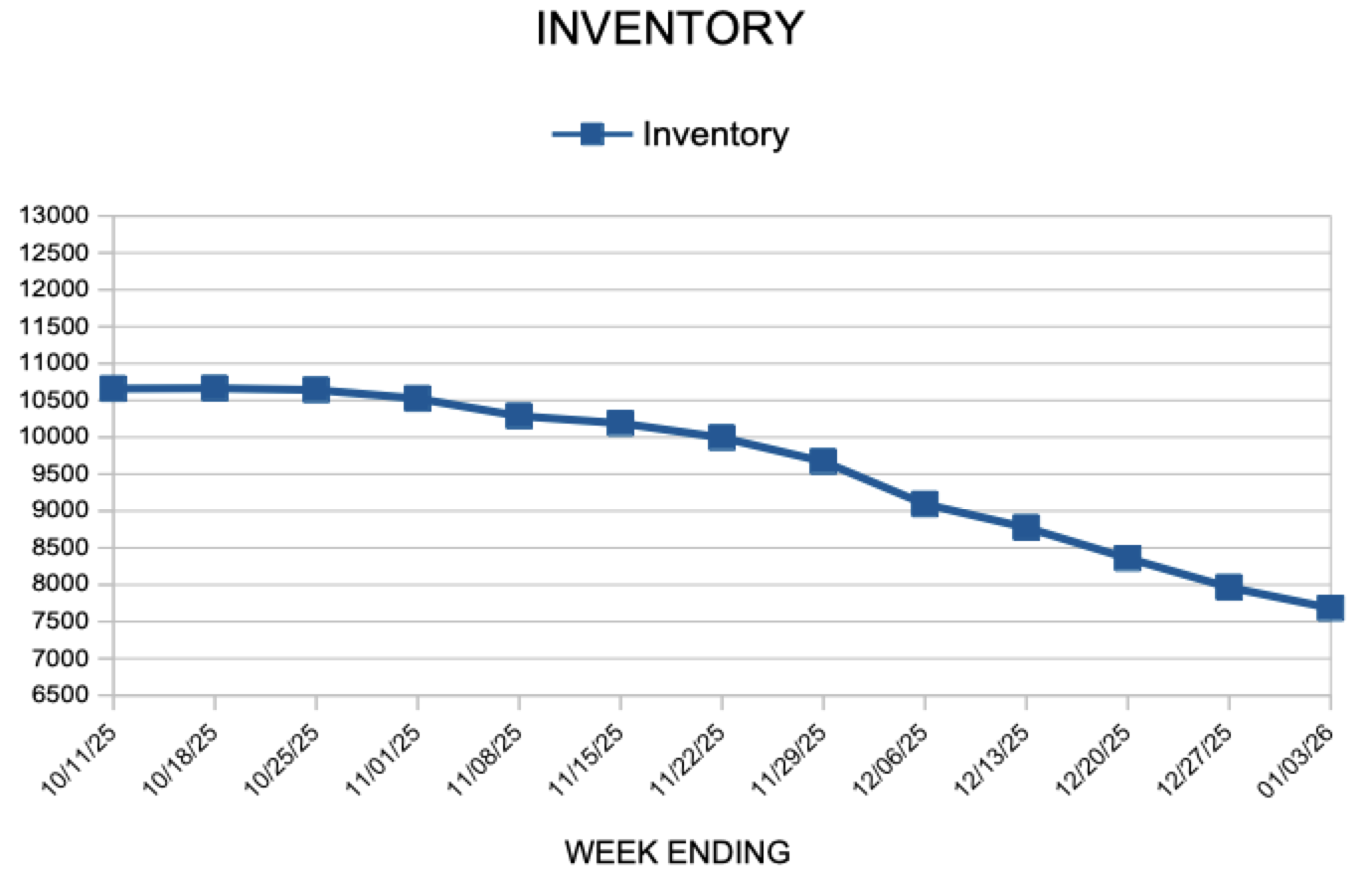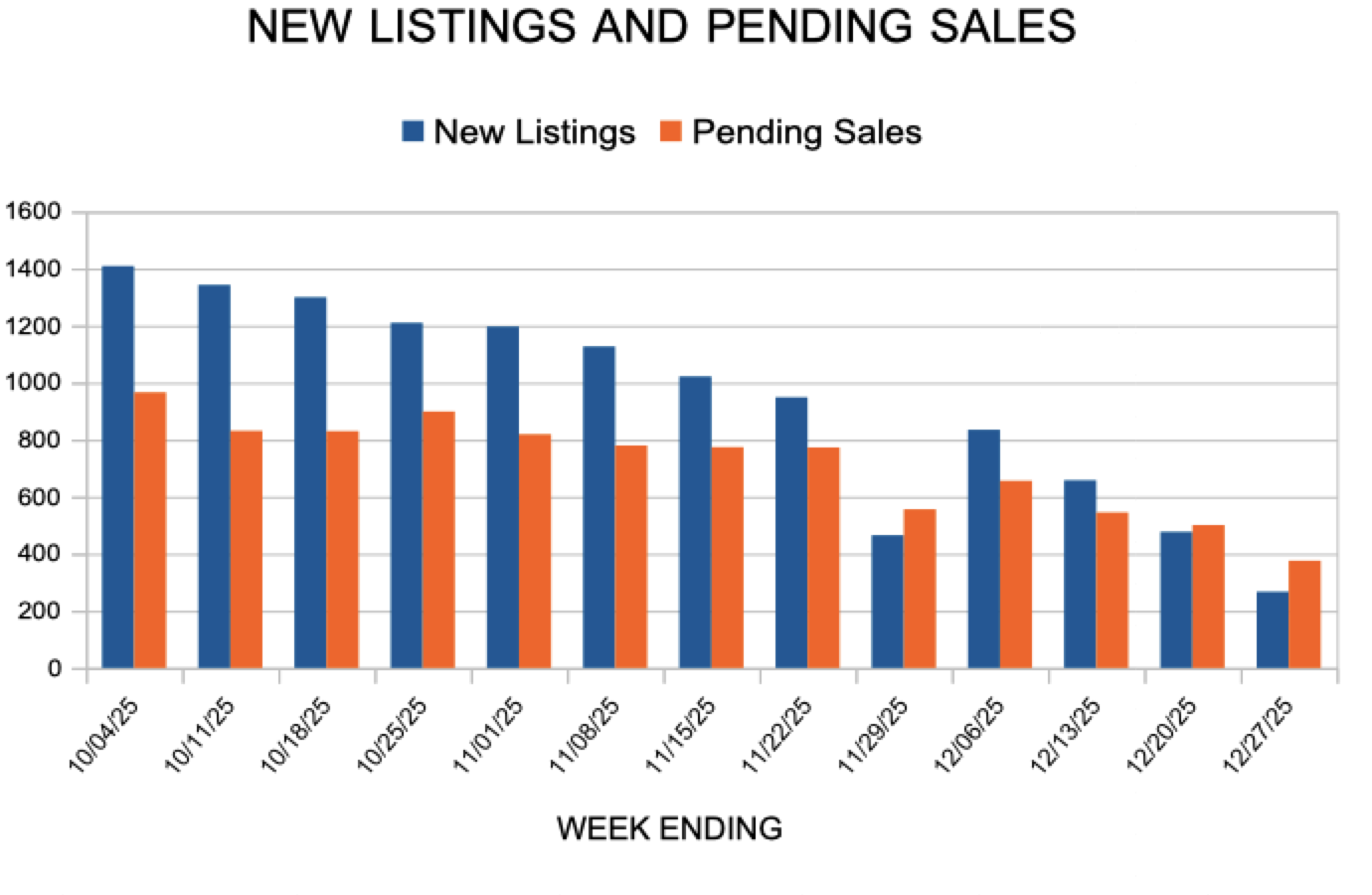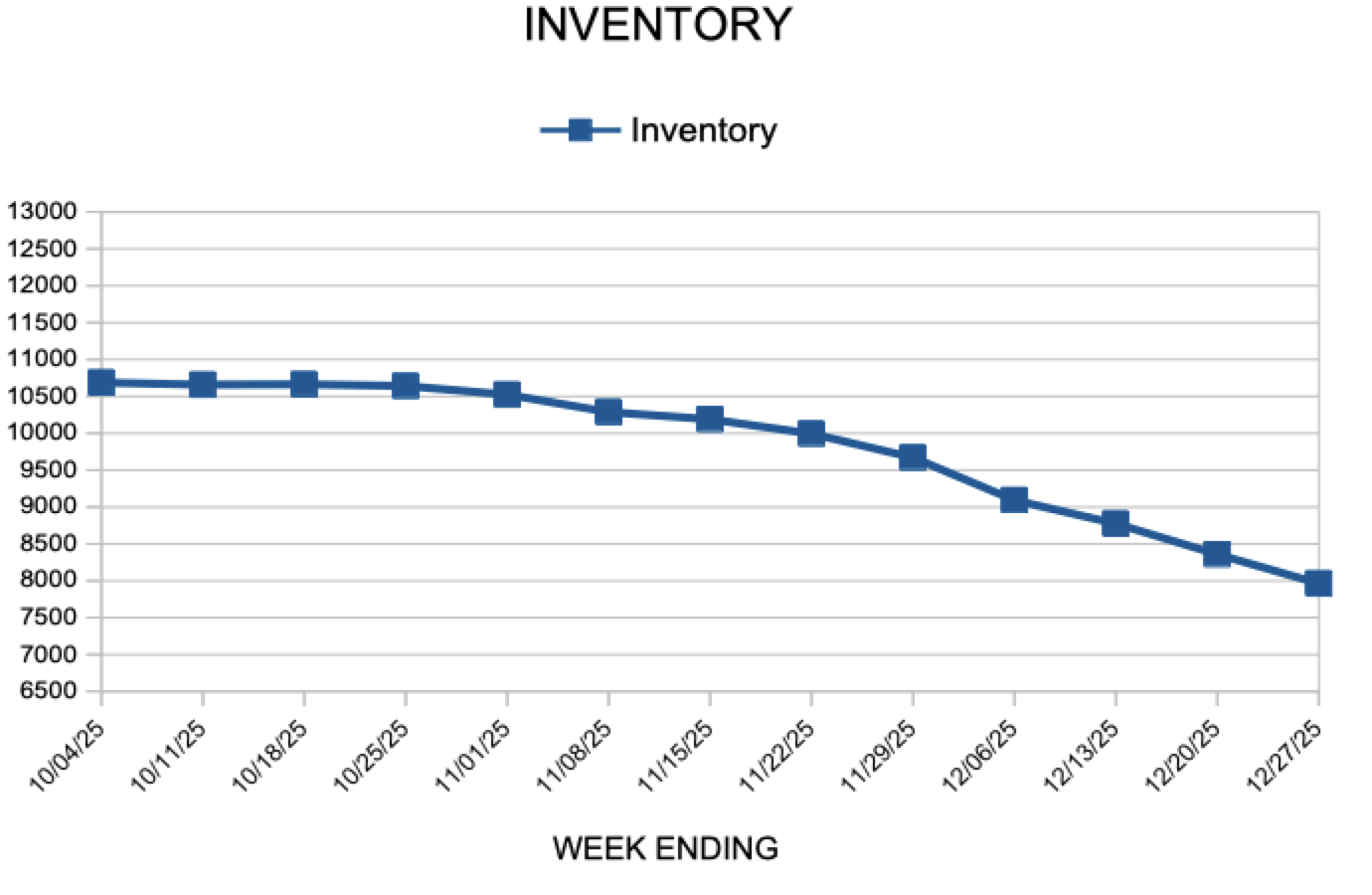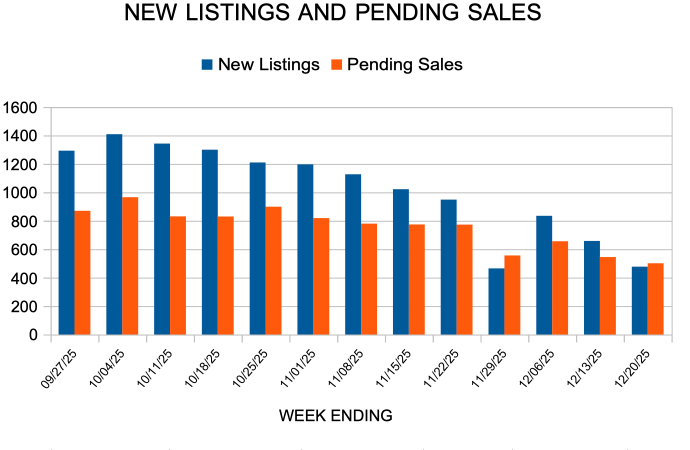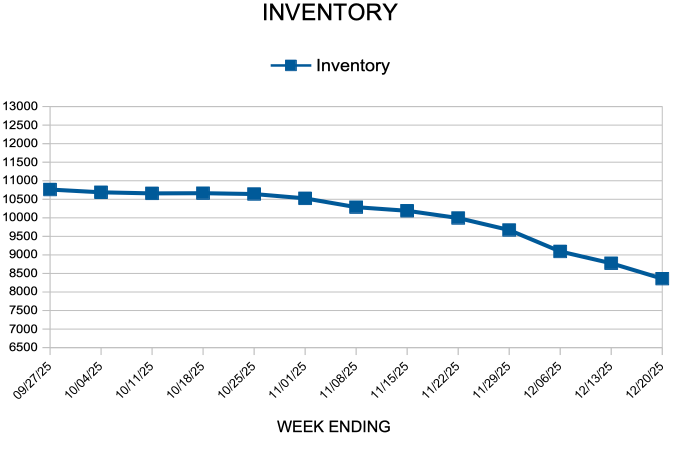Inventory
Weekly Market Report
 For Week Ending January 3, 2026
For Week Ending January 3, 2026
The National Association of REALTORS® (NAR) forecasts a 14% increase in existing-home sales in 2026, alongside a 5% rise in new-home sales. These gains are being fueled by steady job growth, softening mortgage rates, and improving overall market conditions. Home prices are projected to grow 4% this year, reflecting sustained demand and ongoing inventory constraints.
IN THE TWIN CITIES REGION, FOR THE WEEK ENDING JANUARY 3:
- New Listings decreased 18.9% to 586
- Pending Sales decreased 11.8% to 387
- Inventory decreased 2.6% to 7,683
FOR THE MONTH OF NOVEMBER:
- Median Sales Price increased 2.9% to $387,000
- Days on Market remained flat at 50
- Percent of Original List Price Received decreased 0.2% to 97.4%
- Months Supply of Homes For Sale remained flat at 2.5
All comparisons are to 2025
Click here for the full Weekly Market Activity Report. From MAAR Market Data News.
Mortgage Rates Stable, Purchase Demand Rising
January 8, 2026
In the first full week of the new year, mortgage rates remained within a narrow range, hovering close to the 6% mark. The combination of solid economic growth and lower rates has led to improving momentum in for-sale residential demand, with purchase applications up over 20% from a year ago.
- The 30-year fixed-rate mortgage averaged 6.16% as of January 8, 2026, up slightly from last week when it averaged 6.15%. A year ago at this time, the 30-year FRM averaged 6.93%.
- The 15-year fixed-rate mortgage averaged 5.46%, up from last week when it averaged 5.44%. A year ago at this time, the 15-year FRM averaged 6.14%.
Information provided by Freddie Mac.
New Listings and Pending Sales
Inventory
Weekly Market Report
 For Week Ending December 27, 2025
For Week Ending December 27, 2025
Nationally, 46.1% of mortgaged residential properties were classified as equity-rich in the third quarter of 2025, according to ATTOM’s latest 2025 U.S. Home Equity & Underwater Report. This marks a slight decline from 47.4% the previous quarter and from 48.3% the same time last year. The three states with the highest share of equity-rich properties were Vermont (86.8%), New Hampshire (61.4%), and Rhode Island (59.8%).
IN THE TWIN CITIES REGION, FOR THE WEEK ENDING DECEMBER 27:
- New Listings decreased 22.4% to 267
- Pending Sales decreased 11.9% to 376
- Inventory decreased 2.9% to 7,964
FOR THE MONTH OF NOVEMBER:
- Median Sales Price increased 2.9% to $387,000
- Days on Market remained flat at 50
- Percent of Original List Price Received decreased 0.2% to 97.4%
- Months Supply of Homes For Sale remained flat at 2.
All comparisons are to 2024
Click here for the full Weekly Market Activity Report. From MAAR Market Data News.
Mortgage Rates Drop to Lowest Level in 2025
December 31, 2025
After starting the year close to 7%, the average 30-year fixed-rate mortgage moved to its lowest level in 2025 this week, an encouraging sign for potential homebuyers heading into the new year.
- The 30-year fixed-rate mortgage averaged 6.15% as of December 31, 2025, down from last week when it averaged 6.18%. A year ago at this time, the 30-year FRM averaged 6.91%.
- The 15-year fixed-rate mortgage averaged 5.44%, down from last week when it averaged 5.50%. A year ago at this time, the 15-year FRM averaged 6.13%.
Information provided by Freddie Mac.
New Listings and Pending Sales
Inventory
- 1
- 2
- 3
- …
- 118
- Next Page »


